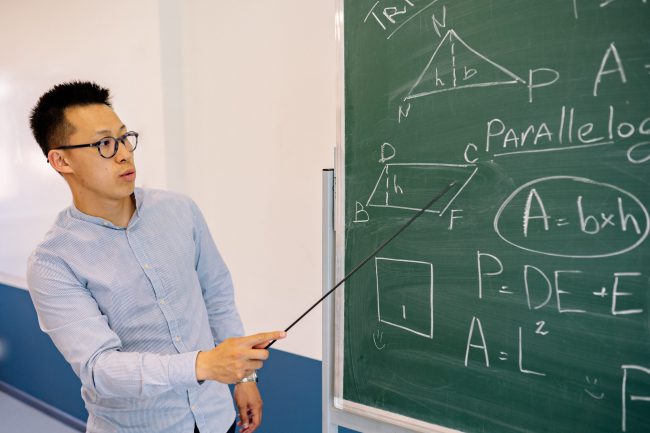Visual Approach to Math Instruction is Good Fit for All Learners

By Chris Coyne, Senior Education Consultant, Marshall Cavendish Education
ccoyne@marshallcavendish.com
Today’s global economy requires critical thinkers, people who can work in teams and those who can solve problems and adapt to a changing landscape. As a former math teacher, I know that these skills are in the very DNA of mathematics. And, those skills are being more finely honed in math classes across America as math lessons start to look a bit more like an art class with drawing, discussion and building techniques used to teach challenging math concepts.
As any good educator knows, students have different ways of grasping content. And, creative teachers have always found a way to teach to individual differences.
A visual approach is certainly validated by well-established research: From Howard Gardner’s research on the multiple intelligences to Jerome Bruner’s studies that show students learn to a greater degree of mastery and retention when using the Concrete-Pictorial-Abstract (CPA) approach.
Over the years, however, many teachers have struggled to teach math in ways that all students could absorb. That’s because math instruction traditionally has been taught the way teachers learned it: by memorization of steps and procedures rather than according to concepts that make a problem real.
Today, teachers are finding increasing success by incorporating a visual approach to math by using Singapore Math®, developed by Marshall Cavendish Education and adopted by the Singapore Ministry of Education nearly 30 years ago.
Visual instruction in CPA classrooms also includes concrete manipulatives such as foam number cubes, rods, discs, paper, coins and other tangible objects. This type of visual approach also uses pictures, either on paper or digitally, as well as diagrams, images or other visuals to represent the concrete situation. The abstract component includes the symbolic representations: numbers, letters and symbols that students need to master.

The meaning of those symbols must be rooted in experiences with real objects. By progressing through the CPA approach, teachers are able to engage different learning styles, and the visual nature builds a foundation for the student as they encounter increasingly difficult concepts and problems.
An approach such as this gives the student the opportunity to recognize which strategies work in different situations. Students learn there is more than one way to solve a particular problem, so in any given classroom one group of students may be solving a problem using one strategy while another group of individuals, is using a different technique.
Any teacher adopting such a new approach to math will likely need professional development. This is because the approach asks teachers to master strategies and methods that are probably new to them.
However, we now know that the old ways of teaching, regardless of subject matter, are often not the most effective. Today, we know that education needs to be student-centered, not teacher- centered. That’s why many of our most successful schools have abandoned the traditional classroom model in which the teacher stands in front of the class and talks, while kids sit in rows, silent unless called on.
In classrooms where a visual approach to math prevails, students are allowed to master concepts first, discuss and explore how to proceed, and discover the process needed to solve the task at hand, rather than just searching for an answer. Students are given the opportunity to learn through discussion and revision, thereby gaining confidence and learning persistence, both of which are attributes they will need their entire lives.
In this way, our goal to help students meet classroom expectations (and those of the Common Core) will be met. Math will become less and less of a mystery. Students will understand how problems apply to real life and the process necessary to solve them.
